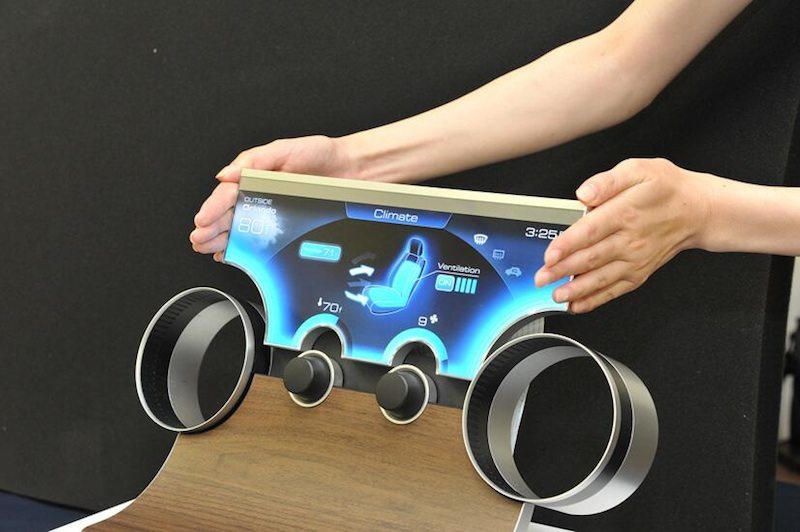Sharp ‘Free-Form’ Technology Will Allow For Non-Rectangular Displays
Chris Hadley / 11 years ago

Sharp has announced a new prototype technology which they say will allow future displays to break away from the rectangular shape that they are now and take on any shape that the designer wishes by nearly eliminating the bezel and the gate driver that it covers. Spurred on the current race to develop proprietary display for the likes of Apple’s iWatch, Sharp’s design sees the display drive circuit removed and shrunk down so that it can be dispersed around the pixels on the display area, reducing the bezel right down to almost nothing.
Based in an IGZO panel, the prototype design changes the way in which the power amplifiers are built and with the much thinner bezel, Sharp says that this gives the freedom to make the LCD whatever shape that it needs to be for a particular application, such as a car dashboard as on example.
“Conventional displays are rectangular because they require a minimal width for the bezel in order to accommodate the drive circuit, called the gate driver, around the perimeter of the screen’s display area. With the Free-Form Display, the gate driver’s function is dispersed throughout the pixels on the display area. This allows the bezel to be shrunk considerably, and it gives the freedom to design the LCD to match whatever shape the display area of the screen needs to be”

Although this new technology is clearly still in a prototype stage, the huge number of potential applications for the ‘free-form’ display are huge, with the automotive industry just one example of where non-rectangular displays are likely to be found. There is no word on the cost of these displays, nor a projected date when they will be ready for the mass market, but Sharp assures us that they will begin production “at the earliest possible date”.
With many manufacturers racking to develop proprietary displays for the mobile market, with the speculated iWatch just being one example, Sharp may have hit on a potential goldmine right here and I wouldn’t be surprised to see a patent appear in the coming months as things develop.
Source and image courtesy of The Verge



















